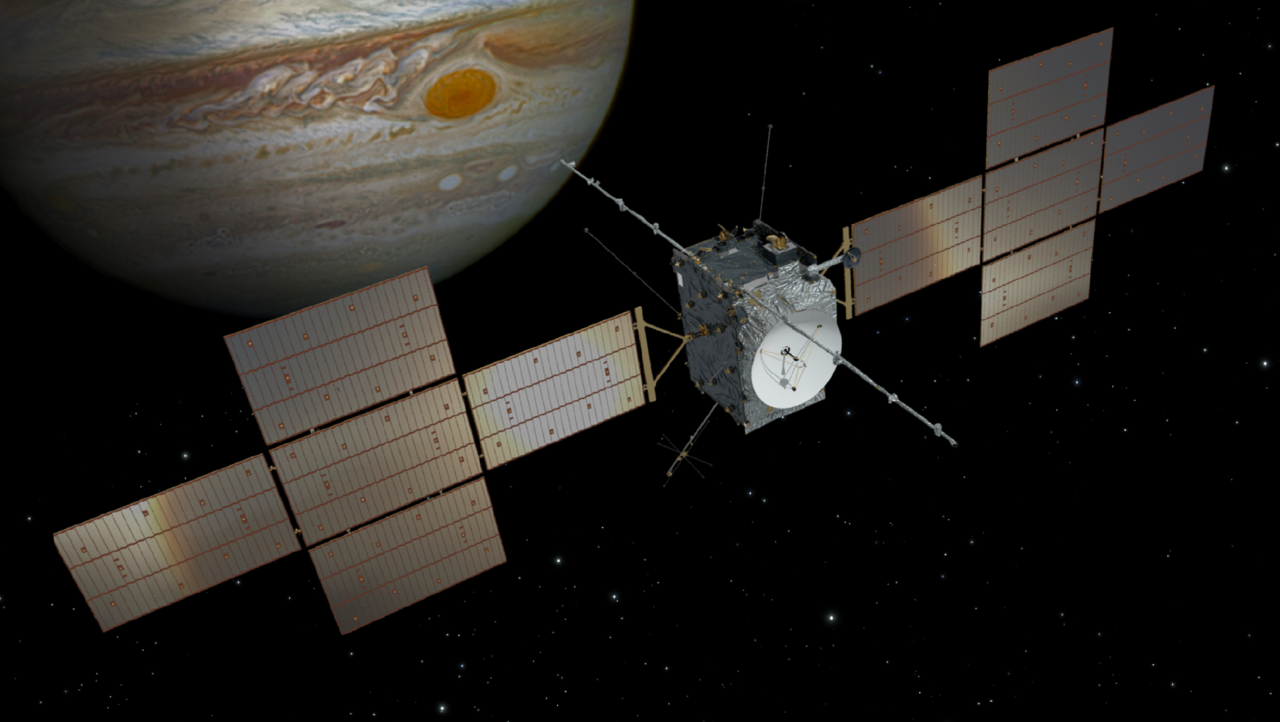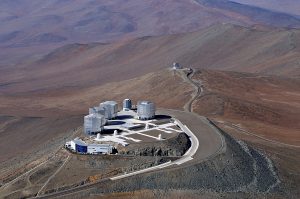
JUICE, the spacecraft was launched in April 2023 towards Jupiter.Continue reading

An international team of researchers led by József Varga of Konkoly Thege Miklós Astronomical Institute at the HUN-REN Research Center for Astronomy and Earth Sciences, has observed a young star that may look like the Sun did at the time of its formation.
The researchers studied the origin of the Solar System and examined the young star HD 144432, 500 light years from Earth and surrounded by a dusty debris disk.
The young star’s disk was mapped by a team of researchers using a Very Large Telescope Interferometer (VLTI) at the Paranal Observatory in Chile. The new data revealed never-before-seen details about the inner region of the disk, showing that the dust is concentrated in three rings.

Four Very Large Telescopes (VLTs) and a VLT Survey Telescope (right) at the Paranal Observatory in the Altacama Desert, Chile. Photo: Wikipedia
This is the first time that such a complex ring structure has been observed in the inner region of a disk around a star. Compared to the Solar System, the smallest ring of HD 144432 would be located within the orbit of Mercury, the second ring is the size of the orbit of Mars, and the third ring is close to the orbit of Jupiter,”
the release by the HUN-REN Research Center for Astronomy and Earth Sciences explained.
These rings are important, because in most cases, planets outside the Solar System (exoplanets) are too small and faint to observe directly. But planets with a large enough mass, once formed in a disk around a young star, open gaps along their orbits. This is why the disk of HD 144432 may have Jupiter-mass planets hiding in the rings.
The researchers also studied the composition of the dust in the disk.
They found chemical elements that are among the most common building blocks of Earth: magnesium, silicon, and oxygen, but also found evidence of iron.
The presence of iron in the dust of disks around young stars has been suspected, but the new study is the first to provide tangible evidence. “It is also remarkable that the dust appears to be rich in iron but poor in carbon, similar to what we suspect was the case when the Earth formed.
These results suggest that the chemistry of the Earth and other rocky planets in the Solar System may not be exceptional, but rather common in our galaxy,”
the astronomers pointed out.
VLTI combines the signals from four giant telescopes into a single multi-resolution measurement. As an example, the resolution of VLTI could be used to count the spots of a ladybug from a distance of 40 kilometers. The first author, József Varga, is a specialist in this technique, in particular the VLTI/MATISSE instrument, and plans to use such extraordinary high-resolution observations to better understand how planetary systems form.
The VLTI/MATISSE instrument was also built with contributions from the Konkoly Thege Miklós Astronomical Institute. The work has been carried out in collaboration with the VLTI/MATISSE and VLTI/GRAVITY instrument consortia, including researchers from Hungarian, Dutch, French, and German institutions.
Via MTI, Featured image: Pixabay